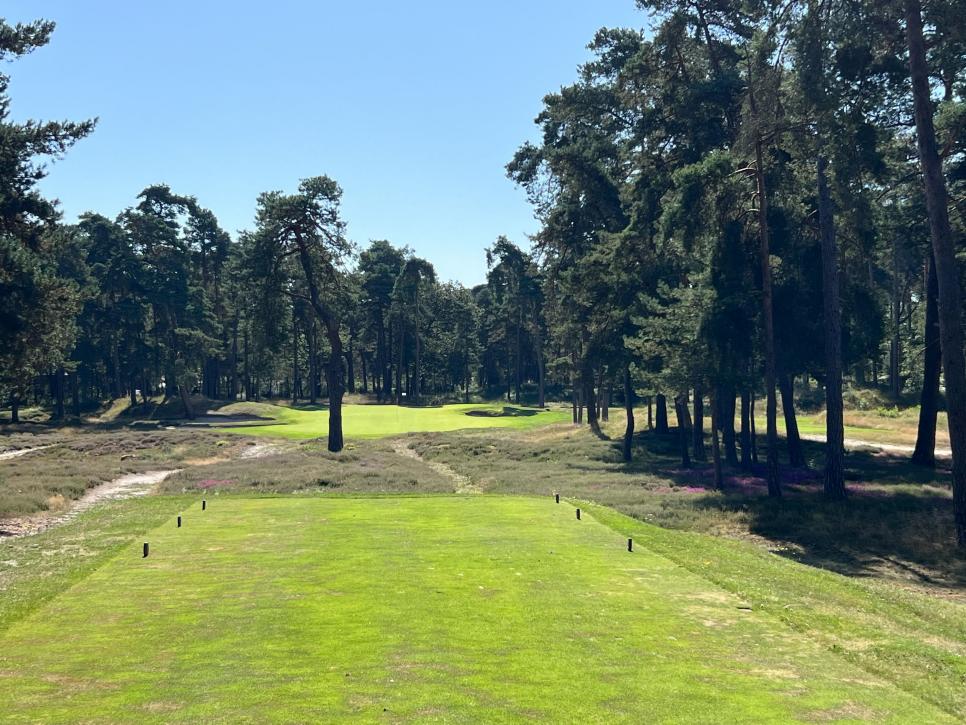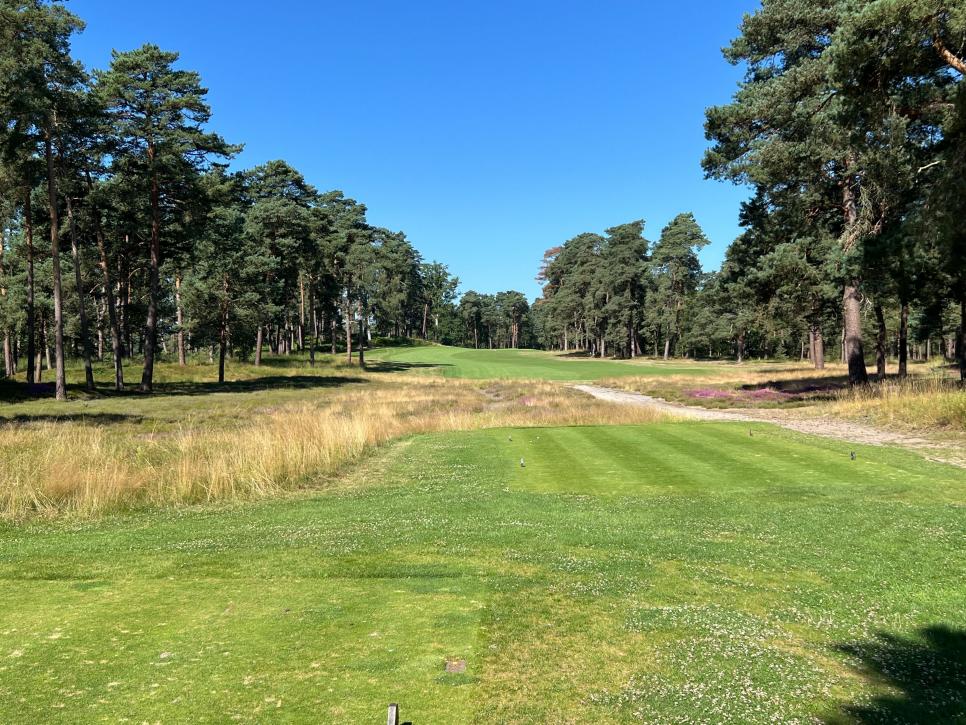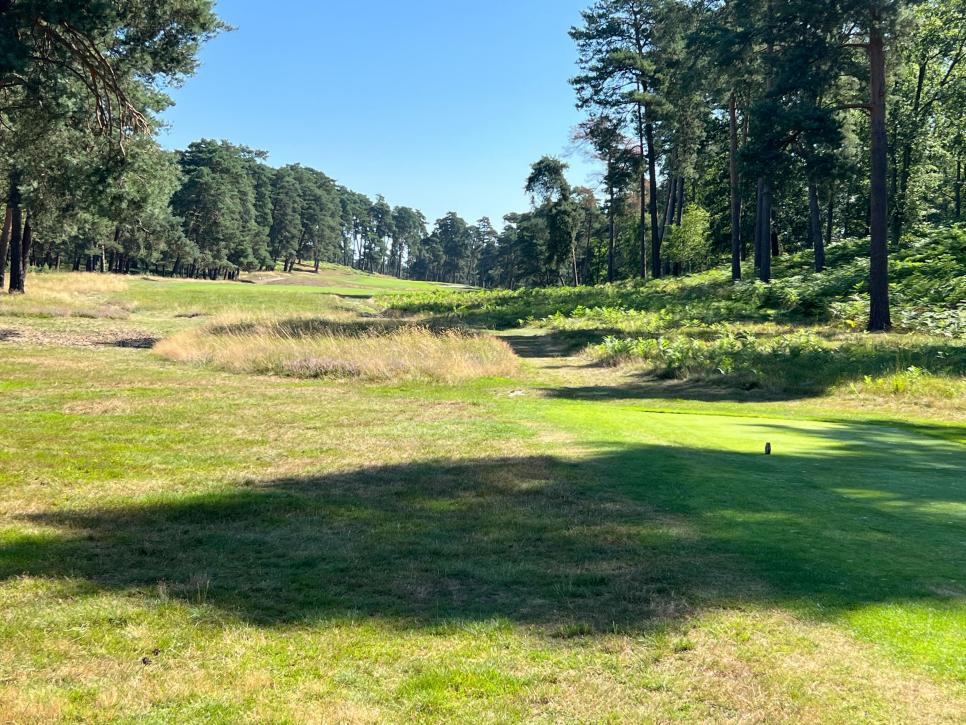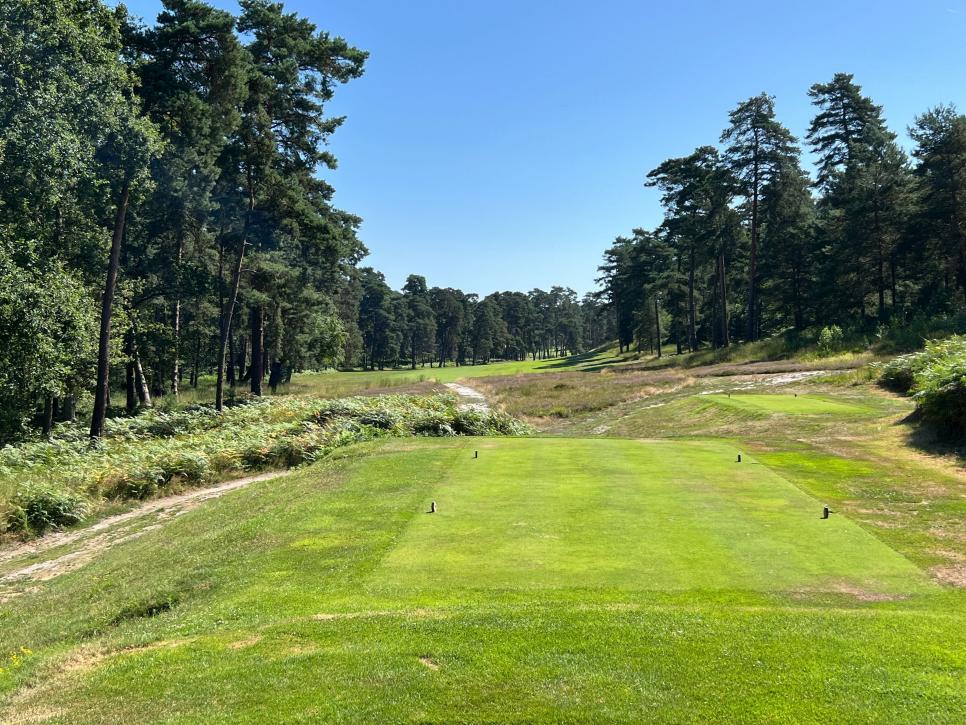Olympics: Le Golf National may be golf’s biggest success of the moment, but another Paris course might be its quietest – Australian Golf Digest

- by Admin
- August 6, 2024

MORTEFONTAINE, France — Sometimes golf’s greatest gift is how it finds room to comfortably and yet firmly embody both what you’d expect it to be and what you’d never expect. This is what you learn when in Paris you experience Le Golf National in a Sunday thriller and then drive into a quiet forest primeval on a Monday to find a golf course nearly a century removed from the fireworks of the world’s largest international sporting event.
To its credit and that of the organizers and the thousands of spectators, Le Golf National once again has emerged triumphant in its latest star turn, this time in serving as the host venue for the Olympics golf competition. The stadium-golf style design has challenged players while accommodating, even encouraging crowds of more than 20,000 a day with cheers and songs echoing around its mounds and water features like a kind of golf-a-palooza festival. It is as raucous and electric and intense as if it were choreographed by John Woo, and you feel the echoes of the crowd in your chest like you’ve just experienced Jay-Z or Metallica or yes, even Taylor Swift for the first time in concert.
It is, in its own way, a very good thing for golf in this moment. As Spain’s Azahara Munoz said yesterday after experiencing the men’s final round and not being able to see a thing, “I have never been in a men’s event when it’s this big. It was great to see the atmosphere. It definitely gave me chills. I’ve literally never experienced anything like it. It was amazing.”
Chills. Golf gives you chills in different ways, though. And there are no two different ways than Le Golf National and Golf de Morfontaine.

An hour or so north of Le Golf National’s Megan Thee Stallion modernity, so much on the other side of Paris the streets and the shops here look barely wide enough for one car let alone two, in a primeval forest of pine and fields of moorland heather and ancient elder, golf is a different thing, a completely opposite and no less epic or majestic thing. If Le Golf National turns up its volume to 11, than Golf de Morfontaine, that exquisite and most private of enclaves that is the No. 1 course in France and for those who know, quite likely all of Europe, invites you in with a whisper. Among many reasons, it may be the most unknown great course in the world. And it is perfectly fine staying that way.
Morfontaine (pronounced “moor-fahn-tan”) is that rare club in Europe that has a security gate, so don’t expect your local pro to make a call to get your foursome on the tee for next Thursday. It is a getaway for what one writer called “the cream of the crop. … CAC 40 bosses, lawyers, surgeons, doctors, writers, art gallery owners,” and he notes that the rare guest has included presidents (French, like Mitterand, and American, like Eisenhower) and the occasional but substantial actors (Gary Cooper, Clint Eastwood and Hugh Grant). If Morfontaine is like anything American golfers might know, it could be something like Pine Valley, but even then the comparison is off a beat or two. Morfontaine’s dramatics are more subtle, and it never tries to be all that much more known than it is, which quite practically it isn’t. Though the course itself is not all that far from the A1 highway, when you exit the main road you are transported in time, just as likely to be passed by a horse or idle at the side of the road while another car passes. Even the sign directing you to the club is hidden by overgrowth. That could be intentional, might not be, but don’t expect the ferns to be trimmed back any time soon.

Built on family property by Armand de Gramont, the 12th Duc de Guiche, Morfontaine started with a nine-hole course opened in 1913. Known as the Valliére it still exists on the property as distinctly maintained as if it opened yesterday. It was designed by Tom Simpson, that fiercely independent golf course designer that the legendary English architect Fred Hawtree suggested was “the last of that pioneering band of amateurs who disliked the thought of dreary days wasted in work between rounds of golf.” The Valliére’s greens still crash the property like waves in a storm, and they set a tone for Simpson’s style that would further mature in the main 18-hole course known as “Grand Parcours,” or “great course.” Exactly.
It is hard to do justice to an experience of walking the property of Morfontaine on a quiet Monday in August when all of Paris seems to be on vacation and the course is yours with a borrowed set of clubs, a trolley and a gentle handshake from the club’s general manager, Jean Dulout, who now in his 25th year took over the job from the club’s former longtime general manager, his father.
“This is a kind of home, a family,” Dulout says. “This is this is not a place where they come to do business meetings. It’s written in the rules. They are not supposed to do business at all. It’s written that it’s not permissible to talk about business, politics and religion in the club. It’s really quite beautiful.”

Seems fitting for a place adorned with photos from the 1930s and ‘40s, books and paintings and even tapestries, like you are in the sitting room of a serene country cottage, where the windows look out at a moss-decked patio with plain chairs providing a kind of backdrop to a course below that looks more watercolor than real. Fitting because Simpson often sketched holes in watercolor, finding the muse in maybe the wind or a roe deer nibbling on a stray fern or some elephant grass.
If Americans are familiar with the diabolical nature of Pete Dye’s golf course architecture, understanding Simpson, who never designed a course in America, is like appreciating the differences and similarities and historical links between H.L. Mencken and Jon Stewart. Simpson designed what he saw, and Morfontaine is as natural a golf course conundrum as there is. Simpson operated with an unbowed sense of freedom, says Frank Pont, a golf course architect who’s intensely studied Simpson designs as part of the team at Clayton, Devries and Pont.
“There’s a gritty, irregular, asymmetry to his architecture and how he operated,” Pont says, calling Simpson “an eccentric, creative genius” and pointed to Morfontaine’s iconic par-3 13th where a Scots pine looms directly in the middle ground between tee and green. “He’s famous for saying the middle of the fairway, except for perhaps once in the round for the sake of variety, should never be the true line to the hole.
“He sketched holes, he even embroidered holes, and he really didn’t give a damn if others thought a hole or a green should look a certain way or be changed. He was going to do it his way. That was his genius.”

And the environment that Morfontaine exemplifies — quiet, removed, unhurried — is that same kind of genius, too. While other clubs struggle with old ideas about membership, Morfontaine for much of its existence has had a substantial female component, with perhaps a quarter or more of the current membership women. Noted modern architect Kyle Phillips has been brought in to make sure the design remains relevant to modern times — for members, not professionals — his main task has been at keeping the place authentic to Simpson. His tweaks are as effective as they are imperceptible to a first-time visitor. Like everything at Morfontaine, from the locker room to the demitasse, it seems of an unchanged era. Everything about it seems so real and vibrant yet comfortably disconnected from the reality of the current moment. It’s like, as the movies say, coming home to a kind of home you’ve never been to.
It is clear that Morfontaine is not Le Golf National. And it is just as fair to say that Le Golf National is not Morfontaine. As Pont says, “These really are the same coin, just different sides of that coin.” The success of the Olympics, the possibility that golf may have established itself in a more global way with this fireworks-filled Olympics in Paris, seems undeniable, crowds and volume and electricity alone. But Golf de Morfontaine reminds us of what golf without the volume really is at its core, where its true appeal takes purchase. In the case of the Olympics and Le Golf National, you not only are filling out scorecards, you are watching electronic scoreboards and tweeting from your Apple Watch. At Morfontaine, you are caught watching a roe deer leave footprints in a bunker, and while you can write down your scores, you’d be just as likely to write poetry instead or, appropriately to Tom Simpson, draw a picture.
If Le Golf National is Lady Gaga, Morfontaine is Edith Piaf. The beauty for golf is both are singing the same song. Both are singing about love.
This article was originally published on golfdigest.com
The Latest News
-
January 9, 2025Cleveland New Releases for 2025 – Australian Golf Digest
-
January 9, 2025’Never told anybody’: Djoker makes sensational claim he was ‘poisoned’ in Australia
-
January 9, 2025Australian Open 2025: Everything you need to know
-
January 9, 2025Djokovic claims he was ‘poisoned’ during COVID detention in Melbourne
-
January 9, 2025Sahith Theegala pledges $100 per birdie and $250 per eagle at the Sony Open toward L.A. wildfire relief – Australian Golf Digest





